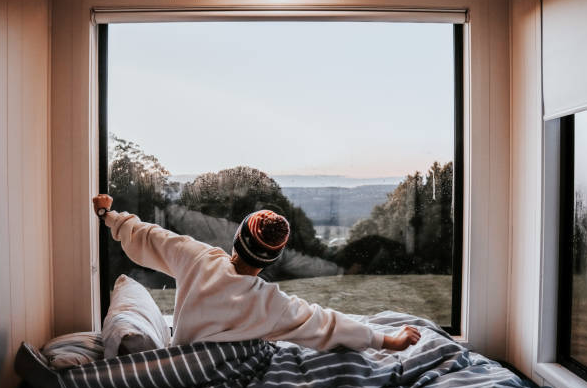
Kiersten is a freelance writer and coach. As a writer,…
Homeownership has been painted as part of the American dream. Yet, for many Black Americans, home ownership can feel like a dream out of reach. In College Park, Georgia, a team of African American real estate developers is making the seemingly impossible possible.
The creators of a Black-owned micro home community
If you know what tiny homes are, you already understand the concept of having a reduced style of living. Micro homes are seen as a more advanced version focusing on sustainability.
With this concept in mind, a team of Black developers came together to create something unique and necessary.
If you’re a Marvel fan, then you remember the epic scene in Avengers: Endgame where every Marvel superhero came together to fight against Thanos. Well, imagine that same scenario but with real people, and instead of Thanos’ army, they are fighting against historical racist practices such as redlining and gentrification.
In the southwest part of Atlanta, a plan was created and executed to create more Black homeowners. It all started with Booker Washington (not the historical figure), who founded and is now the CEO of South Park Cottages.
As he told Atlanta News First, “I always envisioned this is what we deserved. This is a multimillion-dollar project that got executed from crowdfunding, and what’s probably more impressive than just being a Black minority build is that we used community to build it.”
Over the past five years, Washington has been dedicated to real estate and has built up over $5 million in assets.
In addition to Washington, another key developer with the project is Rashad Jones-Jennings, a basketball player before he jumped into the real estate game. Unlike many real estate moguls, he dedicated himself to building in places where he grew up.
Moving past the development side, there’s Pauline Harris, a mortgage branch leader.
She is there to help new homeowners navigate home financing.
Next are Quiana Watson, who offers her expert knowledge in real estate brokerage services, and Cristyl Kimbrough, who uses her knowledge of real estate law to assist buyers with the pre-closing and post-closing process.
What to expect from South Park Cottages
As the state’s largest micro-community, South Park Cottages focuses on building up the community. It targets home buyers from all walks of life with an affordable selling price between $190,000 and $230,000, a more accessible price range than average home prices in Atlanta, which are in the $400,000 range.
Although micro is in the name, these two-story homes are designed to be welcoming and spacious. These homes come with all the amenities of a larger home, including a full kitchen, bathroom, and living space, and offer a loft sleeping area. The homes range from 335 to 615 square feet and have the option to upgrade to more smart home tech.
Outside the home, the community offers a dog park, walking paths, an edible garden, a fire pit, and a play area.
Why home ownership is a powerful tool for Black Americans
Although micro-communities dedicated to Black families and individuals are not yet popping up throughout the United States, Cottage Park Cottages can motivate others to become homeowners.
Homeownership offers many benefits, including the following:
- There’s stability in payments; you don’t have to worry about rent increasing when you pay a mortgage.
- It allows you to have a home as an asset.
- Homeownership makes you eligible for different tax breaks.
Black homeownership rates are still fairly low compared to white homeownership. In 2022, the U.S. Census Bureau showed a 29-point gap between white homeownership, which was at 74.6%, and Black ownership, which was at 45.3%. What’s even more shocking about these numbers is that over the past 50 years, the gap hasn’t changed much. The white homeownership rate in 1960 was 65%, and the Black ownership rate was 38%.
This large gap has stayed consistent for many reasons. One of the reasons is redlining or the denying of loans to Black individuals and families. Another reason is simply needing more money for the down payment. In more affluent families, parents often can give their children, or help them with, their down payment. This is different in many minority families.
Fortunately, there are organizations, such as the Chase HomeBuyer Grant and the 2 Million Black Homeowners Program, that provide down payment assistance.
Home ownership equals not just wealth but also community
Owning a home allows many Black families to build generational wealth. It’s the opportunity to pass down more than generational trauma. But beyond this, with more Black homeowners, there is more opportunity to build community.
When someone purchases a home, they often will stay in that residence for years to come. With this extended stay, they are more likely to be involved in the community and support the neighborhood where they live. Thus home ownership has benefits that go beyond the owner.
Kiersten is a freelance writer and coach. As a writer, she has written for Travel Noire, Passion Passport, BAUCE mag, and various travel and lifestyle blogs. As a writer, her goal is to write content that inspires others to take action. As a coach, her goal is to empower women to be their most authentic selves. In her free time, you can find her dancing to any song any where.











